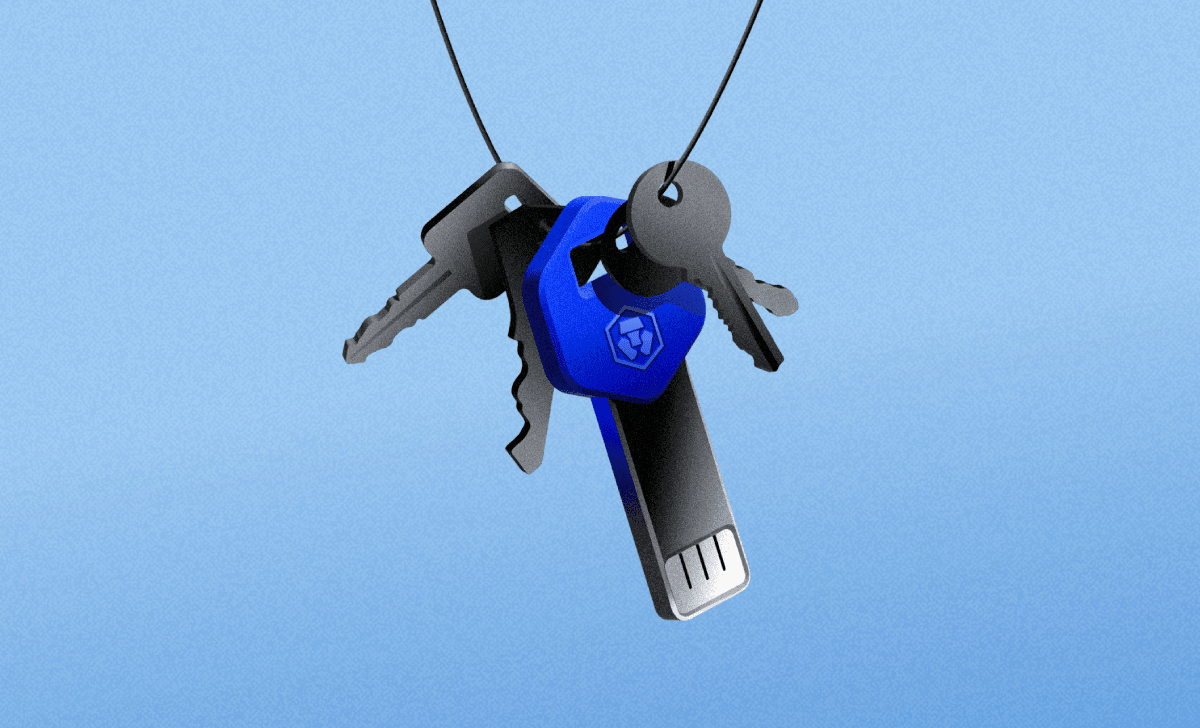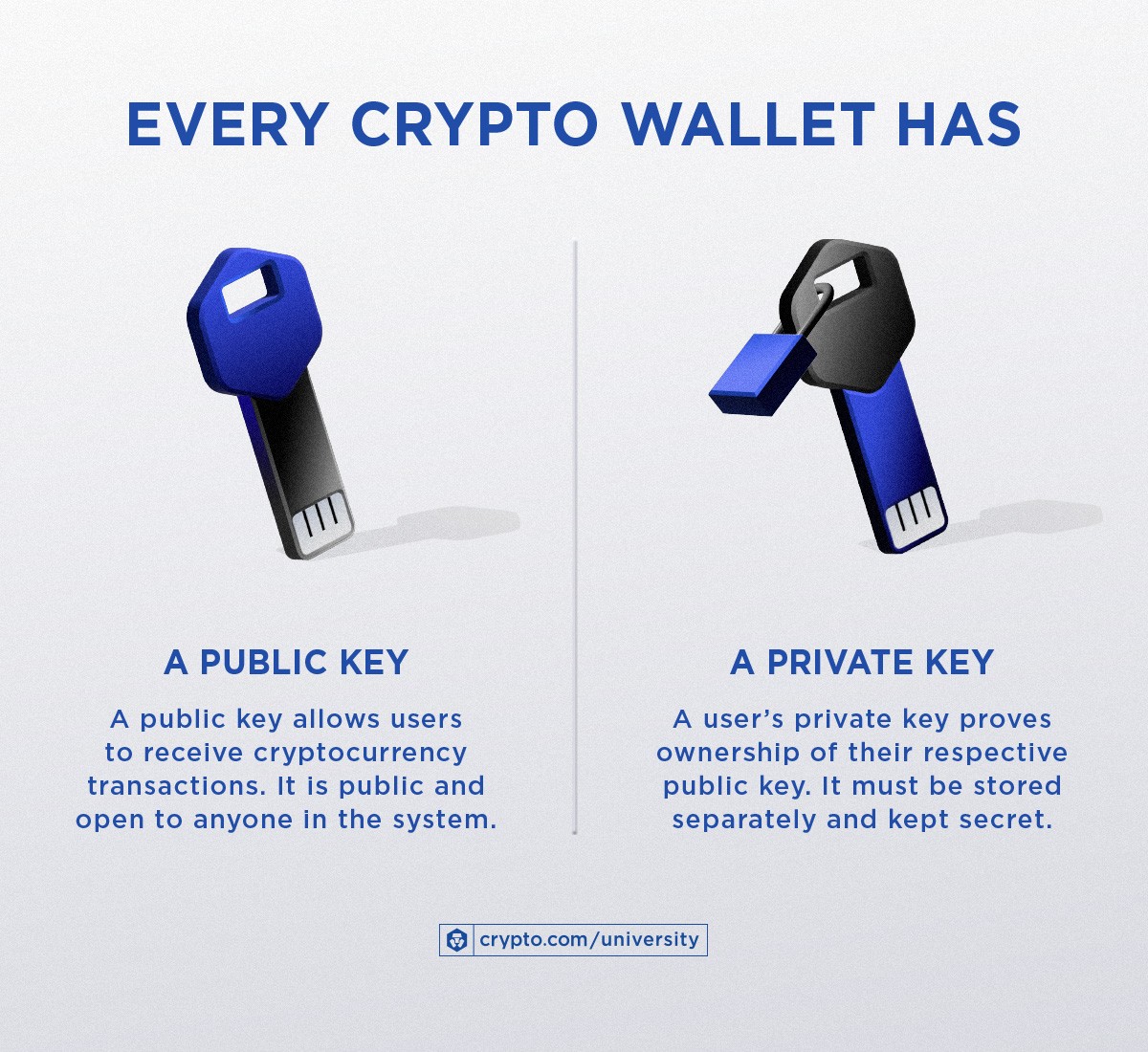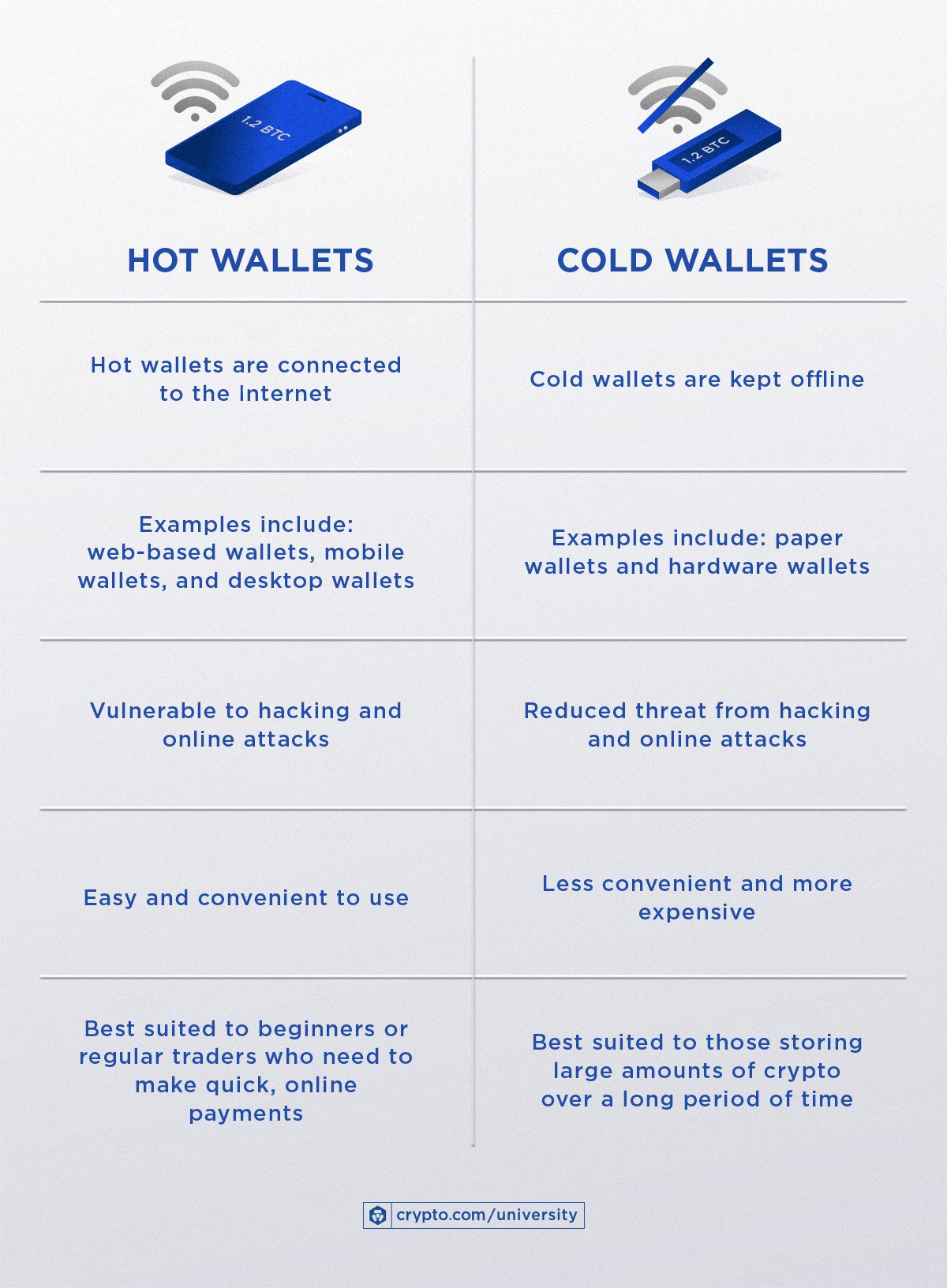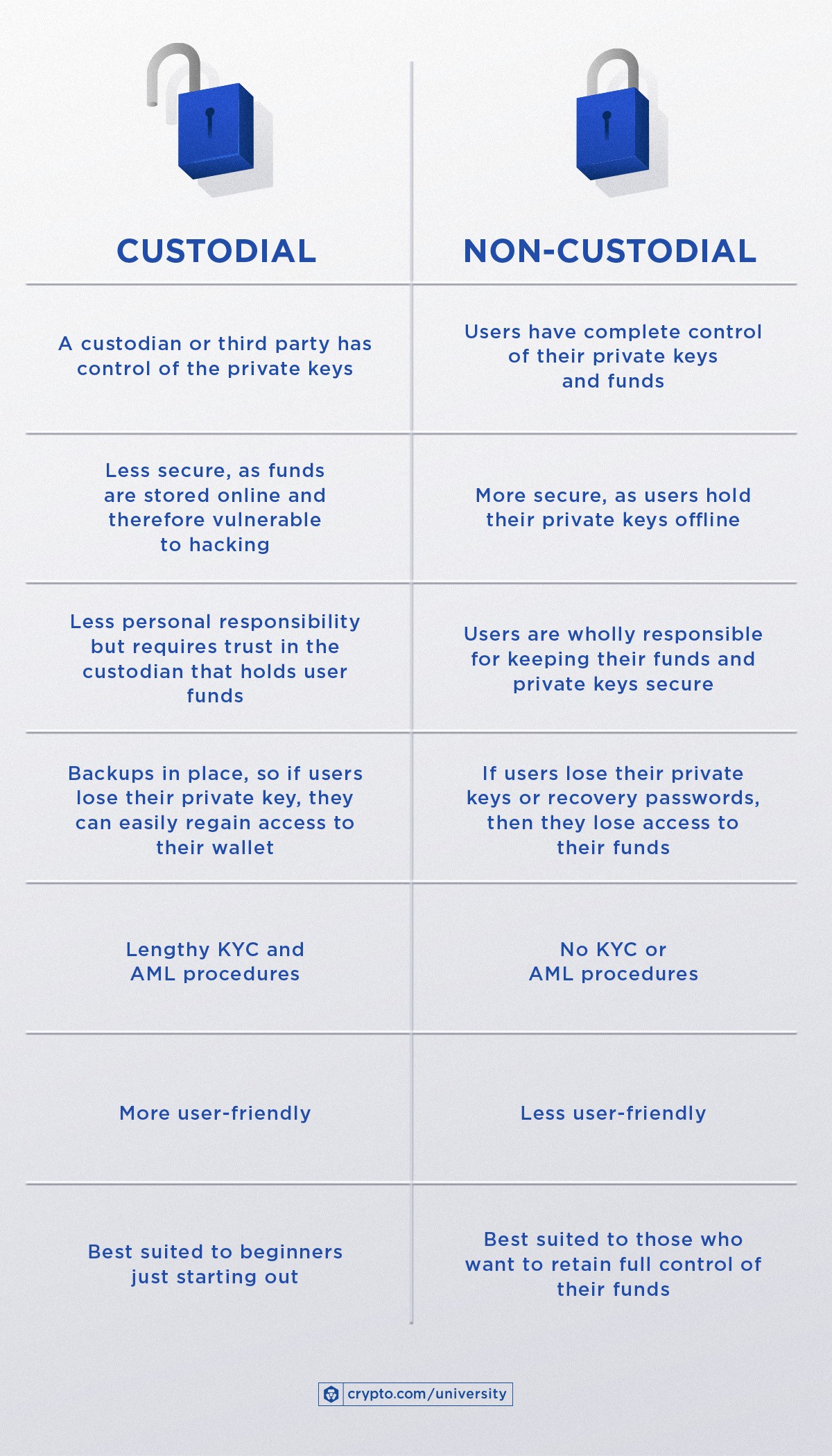What Is a Crypto Wallet? A Beginner’s Guide


Mục lục bài viết
Key Takeaways:
- Contrary to popular belief, crypto wallets do not physically hold cryptocurrencies like the wallet in someone’s pocket.
- Instead, they store the public and private keys required to buy cryptocurrencies and provide digital signatures that authorise each transaction.
- There are several types of crypto wallets, including physical devices, software, and even paper.
- Determining which crypto wallet is best depends entirely on individual trading needs.
What Is a Crypto Wallet?
Cryptocurrency wallets store users’ public and private keys, while providing an easy-to-use interface to manage crypto balances. They also support cryptocurrency transfers through the blockchain. Some wallets even allow users to perform certain actions with their crypto assets, such as buying and selling or interacting with decentralised applications (dapps).
It is important to remember that cryptocurrency transactions do not represent a ‘sending’ of crypto tokens from a person’s mobile phone to someone else’s mobile phone. When sending tokens, a user’s private key signs the transaction and broadcasts it to the blockchain network. The network then includes the transaction to reflect the updated balance in both the sender’s and recipient’s address.
So, the term ‘wallet’ is somewhat of a misnomer, as crypto wallets don’t actually store cryptocurrency in the same way physical wallets hold cash. Instead, they read the public ledger to show the balances in a user’s addresses, as well as hold the private keys that enable the user to make transactions.
Not Sure What a Public or Private Key Is?
A key is a long string of random, unpredictable characters. While a public key is like a bank account number and can be shared widely, the private key is like a bank account password or PIN and should be kept secret. In public-key cryptography, every public key is paired with one corresponding private key. Together, they are used to encrypt and decrypt data.


Why a Crypto Wallet Is Needed
A user’s cryptocurrency is only as safe as the method they use to store it. While crypto can technically be stored directly on an exchange, it is not advisable to do so unless in small amounts or with the intention of trading frequently.
For larger amounts, it’s recommended that a user withdraws the majority to a crypto wallet, whether that be a hot wallet or a cold one. This way, they retain ownership of their private keys and have full power and control over their own finances.
How Do Cryptocurrency Wallets Work?
As mentioned earlier, a wallet doesn’t technically hold a user’s coins. Instead, it holds the key to their coins, which are stored on public blockchain networks.
In order to perform various transactions, a user needs to verify their address via a private key that comes in a set of specific codes. The speed and security often depend on the kind of wallet a user has.
Different Types of Crypto Wallets
There are two main types of crypto wallets: software-based hot wallets and physical cold wallets. Read on to learn about the different types of cryptocurrency wallets, and which may be a best fit.
Hot and Cold Wallets — What’s the Difference?


Hot Wallets
The main difference between hot and cold wallets is whether they are connected to the Internet. Hot wallets are connected to the Internet, while cold wallets are kept offline. This means that funds stored in hot wallets are more accessible and, therefore, easier for hackers to gain access to.
Examples of hot wallets include:
- Web-based wallets
- Mobile wallets
- Desktop wallets
In hot wallets, private keys are stored and encrypted on the app itself, which is kept online. Using a hot wallet can be risky since computer networks have hidden vulnerabilities that can be targeted by hackers or malware programmes to break into the system. Keeping large amounts of cryptocurrency in a hot wallet is a fundamentally poor security practice, but the risks can be mitigated by using a hot wallet with stronger encryption, or by using devices that store private keys in a secure enclave.
There are different reasons why a market participant might want their cryptocurrency holdings to be either connected to or disconnected from the Internet. Because of this, it’s not uncommon for cryptocurrency holders to have multiple cryptocurrency wallets, including both hot and cold ones.
Cold Wallets
As introduced at the beginning of this section, a cold wallet is entirely offline. While not as convenient as hot wallets, cold wallets are far more secure. An example of a physical medium used for cold storage is a piece of paper or an engraved piece of metal.
Examples of cold wallets include:
- Paper wallets
- Hardware wallets
What Is a Paper Wallet?
A paper wallet is a physical location where the private and public keys are written down or printed. In many ways, this is safer than keeping funds in a hot wallet, since remote hackers have no way of accessing these keys, which are kept safe from phishing attacks. On the other hand, it opens up the potential risk of the piece of paper getting destroyed or lost, which may result in irrecoverable funds.
What Is a Hardware Wallet?
A hardware wallet is an external accessory (usually a USB or Bluetooth device) that stores a user’s keys; a user can only sign a transaction by pushing a physical button on the device, which malicious actors cannot control.
The best practice to store cryptocurrency assets that do not require instant access is offline in a cold wallet. However, users should note this also means that securing their assets is entirely their own responsibility — it is up to them to ensure they don’t lose it, or have it stolen.
Tip: For increased security, separate the public and private keys, keep them offline, and store the physical wallet in a safe deposit box.
Hot Wallets vs Cold Wallets: Which Are Better?
While both methods of storage have benefits and drawbacks, the option depends on a user’s preference. For example:
- For day-to-day trading, accessibility is of paramount importance, meaning that a hot wallet may be worth researching.
- However, for those considering storing a huge amount of crypto assets and who value security over convenience, then consider researching a cold wallet.
Custodial and Non-Custodial Wallets
In addition to those mentioned above, wallets can be further separated into custodial and non-custodial types.


Custodial Wallets
Most web-based crypto wallets tend to be custodial wallets. Typically offered on cryptocurrency exchanges, these wallets are known for their convenience and ease of usage, and are especially popular with newcomers, as well as experienced day traders.
The main difference between custodial wallets and the types mentioned above is that users are no longer in full control of their tokens, and the private keys needed to sign for transactions are held only by the exchange.
The implication here is that users must trust the service provider to securely store their tokens and implement strong security measures to prevent unauthorised access. These measures include two-factor authentication (2FA), email confirmation, and biometric authentication, such as facial recognition or fingerprint verification. Many exchanges will not allow a user to make transactions until these security measures are properly set up.
Exchanges and custodial wallet providers usually also take further steps to ensure the safety of users’ tokens. For example, a portion of the funds is generally transferred to the company’s cold wallet, safe from online attackers.
Crypto.com has taken many measures to ensure the protection of customer funds. After rigorous security audits by a team of cybersecurity and compliance experts, Crypto.com is the first crypto company in the world to have obtained ISO/IEC 27701:2019, ISO22301:2019, ISO27001:2013, and PCI:DSS 3.2.1, Level 1 compliance, and independently assessed at Tier 4, the highest level for both NIST Cybersecurity and Privacy Frameworks, as well as Service Organization Control (SOC) 2 compliance.
Additionally, the company has in place a total of US$360 million for insurance protection of customer funds.
Non-Custodial Wallets
Non-custodial wallets, on the other hand, allow a user to retain full control of their funds, since the private key is stored locally with the user.
When starting a non-custodial wallet, the user is asked to write down and safely store a list of 12 randomly generated words, known as a ‘recovery’, ‘seed’, or ‘mnemonic’ phrase. From this phrase, the user’s public and private keys can be generated. This acts as a backup or recovery mechanism in case the user loses access to their device.
Anyone with the seed phrase is able to gain full control of the funds held in that wallet. In a case scenario where the seed phrase is lost, the user also loses access to their funds. So it is imperative to keep the mnemonic phrase in a secure location, and to not store a digital copy of it anywhere. Do not print it out at a public printer or take a picture of it.
Note that hardware wallets are inherently non-custodial, since private keys are stored on the device itself. There are also software-based non-custodial wallets, such as the Crypto.com DeFi Wallet. The common theme is that the private keys and the funds are fully in the user’s control. As the popular saying within the crypto community goes, ‘not your keys, not your coins!’.
On the flip side, this means that users must be in charge of their own security with regard to the storage of passwords and seed phrases. If any of these are lost, recovery can be difficult or impossible because they are typically not stored on any third-party server.
Custodial vs Non-Custodial Wallets: Which Are Better?
Custodial and non-custodial wallets have various pros and cons that make them suitable for different types of users:
- For those prone to losing passwords and devices, then it makes sense to use a custodial wallet, since an exchange or custodian is likely to have better security practices and backup options. That’s why it’s a popular option for beginners who have little to no experience trading crypto. Further, transaction fees with a custodial wallet tend to be cheaper or even free.
- However, for those who prefer to retain full control over their own funds, consider a non-custodial wallet.
Ultimately, it all comes down to personal choice.
For Additional Security, Consider Multi-Signature Wallets
Multi-signature wallets — or multisig wallets — require two or more private key signatures to authorise transactions. This solution is useful for a number of use cases:
- An individual using a multisig wallet can prevent losing access to the entire wallet in a case scenario where one key is lost. For example, if a user loses one key, there will still be two other keys able to sign transactions.
- Multisig wallets can prevent the misuse of funds and fraud, which makes them a good option for hedge funds, exchanges, and corporations. Since each authorised person has one key, and a sign-off requires the majority of keys, it becomes impossible for any individual to unilaterally make unauthorised transactions.
Any of the wallet types described above have multisig versions — multisig hot wallets, cold wallets, hardware wallets, etc.
NFT Wallets
An NFT wallet is a secure place that stores non-fungible tokens (NFTs). For NFT wallets, there are two main choices: hardware wallets or software-based wallets.
What to Look for in an NFT Wallet
The right NFT wallet depends on a variety of factors, including a user’s level of experience and security needs, as well as the types of tokens they plan on storing. Here are some things to consider when choosing an NFT wallet:
- Compatibility with NFT marketplaces — User needs a wallet that can integrate with the NFT marketplaces they want to buy from.
- Strong security — Can include two-factor authentication (2FA), email confirmation, or biometric authentication.
- User-friendly interface — A good NFT wallet should boast a streamlined user experience, and be easy to set up.
- Accessibility on multiple devices — Most NFT wallets are available via web extensions or as mobile/desktop applications. For enhanced convenience, look for a wallet that’s available on multiple devices that can also synchronise transactions in real time.
- Cross-chain compatibility — Most wallets support Ethereum-based tokens; however, for those who want to mint, buy, and sell tokens on other networks, a wallet with cross-chain compatibility is needed.
Popular hardware wallets include devices by Ledger and Trezor. However, as NFTs are not natively supported by either of these wallets, users need to connect their hardware wallet to a hot wallet that’s capable of storing and managing NFTs.
For an all-in-one solution, consider the Crypto.com DeFi Wallet, widely regarded as one of the most trusted and secure wallets to store NFTs — and voted the best NFT wallet 2022 by TradingPlatforms.
More About Crypto.com DeFi Wallet
The Crypto.com DeFi Wallet is non-custodial, which means that users retain full control of their private keys and assets. Available on Android and iOS, DeFi Wallet allows users to manage 700-plus tokens across 20-plus blockchains and send crypto to anyone at their preferred confirmation speed and network fee.
What’s more, the dedicated wallet supports NFTs on Ethereum, Cronos, and Crypto.org Chain, and enables users to easily view top collections using the NFT Spotlight feature. Users can also use the wallet to potentially earn passive income by locking up cryptocurrencies like CRO, USDC, and DOT. Crypto.com users can now also choose to manage their NFTs within the Crypto.com App. Learn more about how to get started with Crypto.com NFT.
Conclusion
When it comes to crypto wallets, there is no perfect solution. Each type of wallet has different strengths, purposes, and trade-offs. It’s up to the user to weigh what works best for them:
- For those with a high-risk tolerance who want to make regular, quick online payments, the convenience of a hot wallet, like the Crypto.com App, could suit best.
- But for those a little more risk-averse who intend to hold their coins long term, then a secure offline device, like hardware wallets, might make the most sense.
- The final choice remains in the user’s hands, with the non-custodial Crypto.com DeFi Wallet one of many secure options.
As storing large quantities of coins in a single wallet is quite risky, a combination of cold and hot wallets is usually ideal and can help strike the right balance between convenience and security.
Due Diligence and Do Your Own Research
All examples listed in this article are for informational purposes only. You should not construe any such information or other material as legal, tax, investment, financial, or other advice. Nothing contained herein shall constitute a solicitation, recommendation, endorsement, or offer by Crypto.com to invest, buy, or sell any coins, tokens, or other crypto assets. Returns on the buying and selling of crypto assets may be subject to tax, including capital gains tax, in your jurisdiction. Any descriptions of Crypto.com products or features are merely for illustrative purposes and do not constitute an endorsement, invitation, or solicitation.
Past performance is not a guarantee or predictor of future performance. The value of crypto assets can increase or decrease, and you could lose all or a substantial amount of your purchase price. When assessing a crypto asset, it’s essential for you to do your research and due diligence to make the best possible judgement, as any purchases shall be your sole responsibility.











